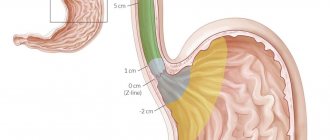Muscle weakness and muscle fatigue are among the most common symptoms for which neurological medical attention is sought. There are objective and subjective criteria to determine the presence of a pathological condition. When we talk about weakness, we usually mean a decrease in muscle strength, but patients often complain of general fatigue or difficulty moving in certain areas of the body.
Weakness can be present in individual muscles, affect many groups or the entire body. It occurs suddenly or increases gradually, occurs periodically or persists constantly. In paretic limbs, muscle tone changes, reflexes are quickened or weakened. Depending on the origin and localization of the pathological focus, the clinical picture is supplemented by other symptoms.
Description
Paresis is a decrease in muscle strength.
This condition is a consequence of various diseases and does not depend on belonging to a particular gender, so we can say that it occurs with equal frequency among both women and men. The age range is also different and depends on the cause of paresis. A decrease in muscle strength leads to a decrease in working capacity and the inability to cope independently in everyday life, therefore the development of paresis is a serious social problem and requires timely provision of medical care.
Based on the area of the body in which paresis occurs, it is customary to distinguish the following types:
- monoparesis – symptoms appear on only one arm or leg;
- paraparesis – signs of paresis are present on both parts of the body, which are located symmetrically in relation to each other. With paresis of the arms it is called upper, with paresis of the legs - lower;
- hemiparesis – paresis affects one half of the body;
- tetraparesis - all limbs are affected.
Depending on the level of damage to the nervous system, there are two types of paresis:
- Central (damage is localized at the level of the brain and spinal cord);
- Peripheral (peripheral nerves are damaged).
The main causes of central paresis:
- stroke;
- traumatic brain injuries;
- spinal cord injuries;
- tumors of the brain and spinal cord;
- intervertebral hernia;
- multiple sclerosis;
- amyotrophic lateral sclerosis (ALS);
- cerebral palsy.
Among the causes of peripheral paresis are the following:
- radiculitis;
- demyelinating diseases of the nervous system;
- peripheral nerve injuries;
- compression of nerves, so-called “tunnel syndromes”;
- nerve damage due to connective tissue diseases and vasculitis;
- various poisonings, including alcohol.
Treatment and rehabilitation for paresis
Neurologists at the Yusupov Hospital prescribe drug therapy depending on the cause and type of paresis. Rehabilitation treatment is of great importance for restoring movements and preventing contractures. The Yusupov Hospital is equipped with modern equipment from leading world manufacturers. The rehabilitation clinic employs exercise therapy instructors who improve their professional level in leading European and Russian rehabilitation centers.
Rehabilitation for paresis includes:
- therapeutic exercises;
- mechanotherapy on special simulators;
- massage;
- neuromuscular stimulation;
- use of orthoses;
- physiotherapeutic procedures.
For the convenience of patients, comprehensive rehabilitation programs have been developed that allow them to save the family budget and receive a full course of rehabilitation therapy at a stable, affordable price. In order to undergo a course of treatment and rehabilitation for paresis, call the Yusupov Hospital.
Symptoms
Photo: Doctor.kz
With central paresis, there is a decrease in muscle strength, which has varying degrees of severity. Some people experience rapid fatigue, which occurs after intense physical activity. In this case, a person notices the appearance of fatigue after a hard day of work or sports. There is another variant of the manifestation of central paresis, when there is an almost complete loss of movement. In this case, the quality of life is significantly reduced, even performing any actions in everyday life is difficult for a person or requires outside help. There is also an increase in the tone of the affected muscles, normal reflexes intensify and pathological ones appear, which should not normally be present in a person. Due to increased muscle tone and limited physical activity, contractures occur. This means that there is a restriction of movement in the joint, as a result of which the limb cannot be fully flexed or straightened at the site of contracture.
Peripheral paresis occurs when the nerve is directly damaged. In this case, the disorder develops in one group of muscles that are innervated by the damaged nerve. Therefore, muscle weakness often manifests itself in the form of monoparesis, that is, it affects one leg or arm. Unlike central paresis, with peripheral paresis there is a decrease in muscle tone, weakening of reflexes, involuntary muscle twitching appears, and muscle atrophy develops.
Types of paresis
Central paresis occurs when the brain or spinal cord is damaged. Disorders develop below the site of damage. They capture the right or left half of the body. This condition is called right-sided or left-sided hemiparesis. Paresis of the left arm is called left-sided monoparesis.
If, as a result of central paresis, disturbances occur in both arms or both legs, we are talking about paraparesis, and if motor function is impaired in all four limbs, we are talking about tetraparesis.
Diagnostics
Photo: likar.info
Diagnosis begins with interviewing the patient. The localization of the onset of weakness and possible previous causes contributing to the appearance of paresis are clarified. It is important to find out whether there are people in the family with similar symptoms, and also to clarify the place of work, namely the presence of occupational hazards. After the conversation, the doctor proceeds to a neurological examination, during which muscle strength is assessed on a 5-point scale:
- 5 points – no paresis, muscle strength is completely preserved;
- 4 points – mild paresis;
- 3 points – moderate paresis;
- 2 points – severe paresis;
- 1 point – pronounced paresis;
- 0 points – paralysis.
A neurological examination is aimed at differential diagnosis between central and peripheral paresis. To do this, the volume of active and passive movements, reflexes, muscle tone are checked, atrophies, fascicular and fibrillary twitches are identified. After a general examination, laboratory and instrumental research methods are prescribed. To detect signs of poisoning, a toxicological blood test is prescribed. A general blood test can reveal signs of inflammation, and an increase in the level of leukocytes and ESR will be observed.
ENMG (electroneuromyography) has good information content. This research method allows you to evaluate the electrical activity of muscles, the speed of nerve impulses along the motor and sensory fibers of peripheral nerves, and the number of functioning motor units. EEG (electroencephalography) allows you to evaluate the electrical activity of different parts of the brain. This is important, since this indicator changes with various diseases of the central nervous system. CT and MRI of the spinal cord and brain help in visualizing various pathological conditions, such as tumors, hemorrhages and the like. MRA (magnetic resonance angiography), as the most accurate and safe method for studying cerebral vessels, allows not only to see the blood vessels of the brain and study their anatomical features, but also makes it possible to identify functional defects at a fairly early stage.
Treatment
Photo: saga.co.uk
For successful treatment, it is necessary to first establish the cause that caused the development of paresis. If a tumor or hematoma is detected, surgical treatment is required. In the case of an infectious lesion of the brain or spinal cord, antibacterial drugs are prescribed, which are selected taking into account the sensitivity of the microorganism that is causing the infection. Medicines that help improve cerebral circulation and metabolism are also used. In addition, drugs are prescribed to improve nerve conduction, since it is nerve impulses that generate the work of muscle tissue.
For preventive purposes, it is recommended to lead a healthy lifestyle, namely, give up bad habits (smoking, drinking alcohol), develop a balanced diet, do not forget about dosed physical activity, maintain a day and night routine (sleep should be approximately 7.5 hours daily) . It is important to monitor blood pressure levels, do not forget to take medications that help lower blood pressure, and promptly treat infectious diseases. If appropriate symptoms appear, you should immediately consult a doctor and never delay visiting a specialist, since early initiation of treatment helps improve the prognosis of the disease.
Medicines
Photo: plastichno.com
In the treatment of paresis, neuroprotectors are used - drugs that help protect nerve fibers. For this purpose, B vitamins (B1, B6, B12) are prescribed, which are either used individually or in combination. An example of such a combination drug is Milgamma. This drug is able to restore metabolism inside cells, which helps slow down the process of destruction of myelin (the sheath of the nerve fiber), and also affects myelin regeneration. It is recommended to prescribe in 2 stages. At the first stage, an injection form of the drug is used, at the second, a transition to tablets is made.
Vinpocetine is used to improve cerebral circulation. Its effect is achieved by dilating cerebral vessels. In addition, the drug has antiplatelet and antihypoxic effects. Some experts consider this drug to be outdated and ineffective, but, nevertheless, it is still used to this day.
For neuroinfection, antibiotics are used if there is a bacterial etiology of the disease. The choice of antibacterial drug is made based on an analysis of the sensitivity of the microorganism that causes the infection to certain groups of antibiotics. Often, treatment begins before the test results are obtained, and broad-spectrum antibiotics are used. For example, cephalosporins may be prescribed.
It is important to understand that a phenomenon such as paresis can be a manifestation of various diseases, therefore the treatment is carried out by a qualified doctor who is able to select the necessary treatment taking into account each individual case.
Folk remedies
Photo: fitohome.ru
Paresis does not mean a complete loss of motor activity, so it is important to engage in therapeutic exercises and physical education for a long time, gradually increasing the load. The course of therapeutic exercises is selected by the attending physician and carried out in a medical institution. This is necessary so that each time the patient is under the supervision of a specially trained person who can assess the correctness of the exercise technique, as well as monitor the dynamics of treatment. In addition, it is important to exercise yourself and at home in order to improve and speed up the expected effect of treatment. A gradual increase in load should subsequently be complemented by movements with resistance. This will help in increasing muscle size and strength.
Therapeutic exercises should be combined with massage sessions, which improves tissue nutrition, promotes the formation of nerve impulses, and also prevents the development of muscle atrophy. You can sign up for a massage with a specialist, but given that this therapy is long-term, it is possible to teach massage techniques to relatives so that they can constantly practice at home.
For peripheral paresis, physiotherapeutic procedures have a good effect. They help improve blood circulation, stimulate metabolic processes and trophism, and help restore lost function. In this case, physiotherapy is used:
- diadynamic currents;
- electrophoresis;
- magnetotherapy.
Currently, acupuncture (acupuncture) is gaining momentum. This is one of the methods of alternative medicine, which still has a lot of critical views from various specialists, however, despite this, the demand for this procedure is progressively growing.
The information is for reference only and is not a guide to action. Do not self-medicate. At the first symptoms of the disease, consult a doctor.
SEARCH FOR TREATMENT AROUND THE WORLD WITH YELLMED
Advantages of Yusupov Hospital
- The average experience of our neurologists is 14 years. Many have an academic degree and are doctors of the highest category;
- Well-developed area of rehabilitation treatment - modern equipment for mechanotherapy, experienced instructors;
- We adhere exclusively to the principles of evidence-based medicine and use the best practices of foreign colleagues;
- We did everything to make the patient feel comfortable in the clinic, to create a positive attitude towards recovery.
All this serves one goal - to achieve the maximum therapeutic effect in each patient, the fastest and most complete restoration of impaired functions, and improve the quality of life.








